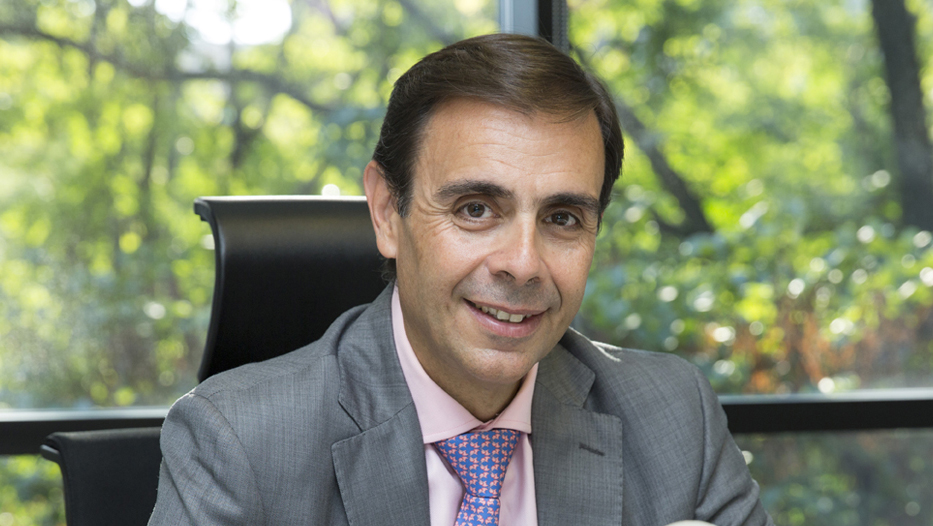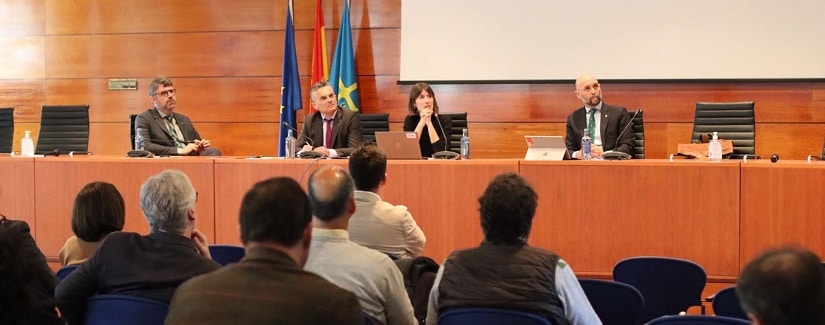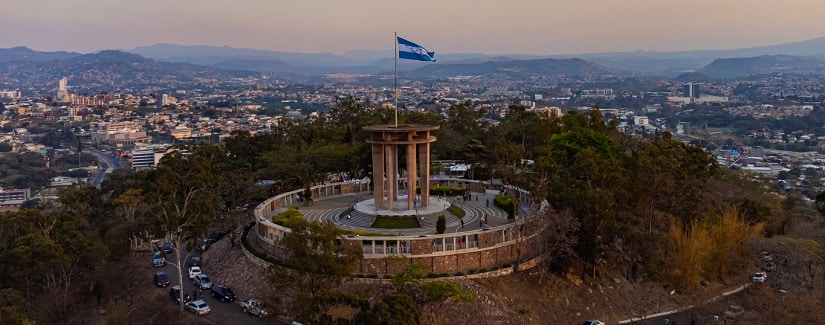“Risk management has been key to reaching each of our milestones”
Juan Jesús García Chaparro, Chief Financial Officer at HISPASAT, asserts that risk management has been a key tool in reaching each of the company’s milestones over the years. In this interview, the director explains how the company has demonstrated over the years that it is highly resilient to adverse circumstances, which it has satisfactorily overcome thanks to risks having been identified and analyzed in advance, contingency plans having been defined and given the insurance coverage being adequate and sufficient.
Risk Management and Insurance ( hereinafter ‘GRyS’): HISPASAT is the Spanish communications satellite operator, leader in the distribution of content in Spanish and Portuguese. How has it assumed this position and what risks or threats has the company had to overcome on its journey?
Juan Jesús García Chaparro (hereinafter ‘JGC’): The leadership position assumed by HISPASAT in Spanish and Portuguese-speaking markets is attributable to a long transformation and internationalization process. When it was founded in 1989, HISPASAT was a public company that was created by the Cabinet to provide a response to Spanish satellite communication needs. It is worth remembering that, at the time, telecommunications were still a public service. HISPASAT was created in order to serve as a driving force and catalyze Spanish industry in the field of aerospace.
“The leadership in Spanish and Portuguese-speaking markets is attributable to a long transformation and internationalization process”
Following the liberalization of telecom industries during the 1990s, HISPASAT gradually became a commercial organization that had to compete on the market with other operators and earn the trust of clients. This transformation represented a huge challenge to the organization, which had to learn to understand market laws against an initial backdrop in which, to some extent, our clients were “cautious” and the capacity of our first satellites had been sold in advance. In truth, the company passed this challenge with flying colors, having confronted the market and come out on top: as a result, in 1997 and 1998, the two HISPASAT satellites, Hispasat 1A and 1B (which have now been taken out of geostationary orbit) were completely occupied.
However, this situation of complete occupancy represented a threat to HISPASAT, given that it couldn’t either respond to the growing needs of existing clients or serve or capture new commercial opportunities. The company therefore committed to growth and internationalization. The fleet expanded with the Hispasat 1C and 1D satellites for traditional markets, and we took a huge step forwards in terms of quality and capacity, expanding into Latin America; this was the key, highly successful venture to which the company’s position in the sector today can be attributed.
‘GRyS’: Could you provide us with more details on this expansion?
‘JGC’: In 2000, we won a contract with the Brazilian regulator for a wholly American orbital position. In 2002, we
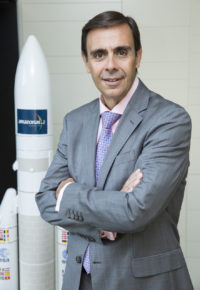 opened our office in Río de Janeiro and founded our subsidiary, HISPAMAR, and in 2004, launched our first Amazonas satellite, targeting the Latin American market, which during its first year of commercial
opened our office in Río de Janeiro and founded our subsidiary, HISPAMAR, and in 2004, launched our first Amazonas satellite, targeting the Latin American market, which during its first year of commercialoperation, captured more than 75% of the growth in the region’s satellite market.
To reach each of these milestones that have proved to be key in the company’s history, which represented a huge challenge for the organization, risk management associated with this type of transformation proc
To date, HISPASAT has launched 11 satellites and will soon launch the H30W-6, operating a fleet of seven own satellites and three shared with other operators from six different orbital positions. In addition to Spain, we are also present in Brazil, Mexico, Argentina and Colombia and provide services to clients in more than twenty countries.ess has been a key management tool.
GRyS’: What financial-economic model has been established by the company and what are the main objectives it has set in this regard?
‘JGC’: In summary, the economic-financial management model is based on a basic principle, structured around strict financial discipline and prudence criteria; it is reflected in three lines of action, which in themselves represent continuous management objectives.
“To date, HISPASAT has launched 11 satellites and will soon launch the H30W-6”
“Our economic-financial management model is based on a basic principle, based on strict financial discipline and prudence criteria”
Firstly, offer our shareholders high returns in all investment projects in new satellites proposed to the Board. Secondly, establish strict control on the costs of our operations to ensure a high level of efficiency that is reflected in a high EBITDA or operating income. Today, HISPASAT is one of the most efficient operators with one of the largest EBITDA’s in the sector. And finally, retain a balanced structure of capital based on an appropriate level of leverage.
‘GRyS’: What role does risk management play at the company and what model has been implemented to develop it?
‘JGC’: Risk management at HISPASAT plays a key role. Although risk management is, or at least should be, a key aspect for all decision-making at companies, both in terms of the day-to-day operations of the business and strategy (reputational, regulatory, market), risk management takes on an even more important role at HISPASAT. This is because of the specific nature of our business, as our operating assets, satellites, are located in an inaccessible location and, therefore, it is impossible to perform repairs in situ for any incidents that may arise.
This entails adopting a model based on the three basic aspects of all risk management models: analysis and identification, prevention and transfer, both to the manufacturer of the satellite and the insurance market, ultimately retaining the portion of the risk considered assumable.
As part of the process of selecting a manufacturer for a new satellite, one of the most important aspects of the technical assessment between the different alternatives is the level of internal redundancies in the satellite for the most critical equipment, such as the testing plan, both on land and in orbit, which ensure that the prevention plan is appropriate in terms of all possible operating contingencies. Furthermore, in terms of the HISPASAT land segment, we have different control centers from which the fleet can be operated, thus guaranteeing the continuity of operations. These centers boast sophisticated prevention, protection and security systems.
Furthermore, in our contracts with manufacturers, we tend to establish the requirement that they assume a significant part of risks, both in terms of the program’s execution deadline and compliance with technical requirements and the satellite’s functionality in orbit throughout its useful life.
Finally, one year before the expected launch date and having completed the satellite’s technical design, activities are planned to take out insurance that covers both launch risks and operations in orbit, starting with a technical presentation of risks to the space insurance market.
‘GRyS’: At the moment, what are the main internal and internal risks to which a group like yours is exposed? How are the different managers and departments involved in tackling these risks?
‘JGC’: The main internal risks we face correspond, on the one hand, to operating risks, such as failing to comply with the schedule established for manufacturing new satellites or circumstances that may affect satellites whilst in orbit, which have a greater potential impact and for which specific contingency procedures have been drawn up; and on the other, risks associated to commercial credit management. In this regard, it is worth noting that, although approximately 70% to 80% of our production is allocated to large-scale operators and other broadcasting groups, the rest is very fragmented and geographically disperse; this requires significant control and monitoring efforts within the parameters established in the group’s internal policies.
In this regard, HISPASAT has demonstrated over the years that it is highly resilient to adverse circumstances, which it has satisfactorily overcome thanks to risks having been identified and analyzed in advance, the contingency plans defined and the insurance coverage being adequate and sufficient.
“HISPASAT has overcome adverse circumstances thanks to risks having been identified and analyzed in advance”
GRyS’: And in terms of external risks?
‘JGC’: In essence, we face two external risks: regulatory and compliance risks, which may affect the legal conditions relating to the provision of services in the different countries in which we operate and other regulatory changes; for example, in terms of tax, which has a direct impact on the profitability of operations. And financial risks associated to the macroeconomic environment of the different countries in which HISPASAT provides its services, in essence, exchange rate developments.
In terms of internal coordination and risk monitoring, a specific team has been set up in the Internal Audit department, which is responsible for continuously assessing the risk map and coordinating the managers of each department directly involved in the management of each risk. Furthermore, every six months, the Board’s Audit Committee is provided with a report on the evolution of the risk map, identifying both new risks and those that have evolved significantly since the last assessment, having been partially or completely mitigated or having disappeared.
‘GRyS’: What external support is available as part of this risk management?
‘JGC’: To design the insurance program and take out the range of policies, we actively work with brokers, depending on their specialization in specific types of risk: space risk, damage to property, third-party liability, life and accident, transport, etc. Naturally, the most complex insurance program that requires most efforts and resources is the policy to cover risks associated with the launch and orbit operations of satellites, in addition to the successive annual renewals once in orbit.
To design the risk map and implement the software tools that make it possible to manage the monitoring of defined risks or incorporate new ones, we receive consultancy services from a major international consultancy firm. Our risk map has been developed by the Internal Audit Department and we use it to clearly identify the risks that, both given the probability of them occurring and the impact that they could have on the income statement, are considered most critical and whose management requires most attention from senior management.
Furthermore, we receive continuous consultancy and support from an expert with a wide range of experience in the sector, who has collaborated with us for a number of years now and who, rather than providing external support, really forms part of the HISPASAT family.
‘GRyS’: Through its large-scale fleet, HISPASAT distributes more than 1,250 television and radio channels. What measures do you take to make sure everything works correctly?
‘JGC’: As I have already mentioned, our satellites are designed and set up with a high number of technical redundancies built-in on-board to preserve a high level of quality and availability of the payload that serve as the basis for offering services to our clients. We also have several locations both to control the satellites and to manage the telecommunications signals that they broadcast.
And finally, our operating procedures are very solid thanks to our 25 consecutive years of experience operating satellites in orbit and, of course and most importantly, a team of first-rate professionals and technicians, whose expertise and unrivalled professional worth make everything seem so simple and who ensure that everything goes like clockwork.
‘GRyS’: What risks do satellites recently commissioned by the company face and what security measures are in place?
‘JGC’: In reality, the same risks as other satellites we have launched previously. We have a standard policy in terms of quality control throughout the manufacturing process and in terms of the exhaustive testing plan we demand from the manufacturer to ensure compliance with technical specifications. New satellites also feature equipment that makes it possible to encrypt telecommunications signals to provide more secure communications services. And we have adequate insurance coverage and defined contingency plans to resolve any incidents that may occur.
“We have contributed significantly to the internationalization of the Spanish space industry and increasing its revenue”
‘GRyS’: The company is also a key catalyst of the Spanish aerospace industry. What role does it play and what added risks does it face in this regard?
‘JGC’: Since its foundation, HISPASAT has sought to collaborate with the Spanish aerospace industry and serve as a catalyst in a leading industry, in which our country has achieved a very noteworthy position in terms of the generation and development of cutting-edge technology.
To this end, the company has developed an industrial development plan that has generated more than one million euros for Spanish companies in the industry over the past 25 years thanks, on the one hand, to the components and equipment we fit into our satellites and, on the other, the commitments we demand from the large international manufacturers we work with, who are obliged to purchase equipment from Spanish companies for a value equivalent to our investment in each satellite in the ten years after construction. As a result, we have contributed significantly to the internationalization of the Spanish space industry and increasing its revenue.
Furthermore, we provide an additional service to innovative companies who develop new systems or elements for satellites, offering them the opportunity to test them in orbit in our missions. By doing so, they can test their efficiency and proper operation in flight, which is essential in order to subsequently market this equipment.
‘GRyS’: HISPASAT has consolidated its position in high-growth markets. What are the characteristics of these markets in terms of financing and risks?
‘JGC’: Many countries in Latin America, where HISPASAT has focused its international strategy since the turn of the century, are considered emerging markets, which are characterized by the fact that they have embarked upon the industrialization process and offer quick economic growth with figures in the first decade of the new millennium that surpass those of industrialized countries. This development went hand-in-hand with an increase in the spending power of consumers, the expansion of the middle class and, as a result, the growth in internal demand, increasing their growth potential.
As part of this process of regional transformation and modernization, satellites have played an essential role, facilitating the quick deployment of telecommunications networks, both for the corporate and residential segments.
However, and despite the significant efforts made by most Latin American countries to apply orthodox macroeconomic management, which has made it possible to reduce many of the imbalances in their economies, the economic and political bases on which their economic and social development is structured are still vulnerable to both external factors, such as the downturn in the price of raw materials, and internal factors, primarily, the risk of political instability. As a result, we must analyze and monitor economic and political events to remain aware of possible and real impacts that could affect the business models and strategies in the region.
‘GRyS’: HISPASAT has a stable base of strategic clients. How are they affected by the solid financial management of the company and optimal risk management, and how are these factors important to them?
In essence, the main telecommunications operators with a presence in Latin America and in the Iberian market, provide most of their communications services by satellite via our fleet and represent a significant part of our turnover. Furthermore, our relationship with them dates back many years, and we have been and continue to be capable of offering solutions to their needs in terms of growth and the roll-out of new applications and services. Therefore, our relationship goes far beyond just a one-off contract to cover a specific need; rather, we are prepared to serve them and respond to them each and every day with the agility and solvency that our clients need, both in the short term and in the long term.
This quick response time, which can entail new satellite programs being rolled out in a short space of time, is only possible thanks to a solid business model, constrained, well-controlled and managed risks, a strong and healthy balance sheet, a balanced financial structure and the support of both our shareholders and the financial market.
‘GRyS’: HISPASAT has a strong presence on the Iberian Peninsula and in Latin America, where it is now the fourth largest satellite operator. Do you believe there are differences when it comes to risk management between European and American companies?
‘JGC’: I don’t think there are any differences in terms of risk management between European and American companies, or at least there shouldn’t be. The risk management model implemented at most companies is based on com
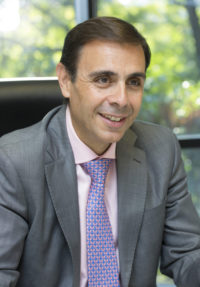 monly developed international methodologies and standards.
monly developed international methodologies and standards.The specific risks to which different companies are exposed depending on the country in which they are located and how they have to manage them depending on their own specific circumstances are another thing.
‘GRyS’: HISPASAT has a strong presence on the Iberian Peninsula and in Latin America, where it is now the fourth largest satellite operator. Do you believe there are differences when it comes to risk management between European and American companies?
‘JGC’: I don’t think there are any differences in terms of risk management between European and American companies, or at least there shouldn’t be. The risk management model implemented at most companies is based on commonly developed international methodologies and standards.
The specific risks to which different companies are exposed depending on the country in which they are located and how they have to manage them depending on their own specific circumstances are another thing.
“I don’t think there are any differences in terms of risk management between European and American companies, or at least there shouldn’t be”
‘GRyS’: What national and international risks do you constantly have to be alert to?
‘JGC’: This is a very broad question and can be approached from a range of different perspectives. I would focus mainly on political risks given the instability they entail, they are of great significance to the environment in which companies’ operations are undertaken and as they can trigger other risks: financial, regulatory, etc. The case of Venezuela is a clear example of what I’m trying to illustrate.
Attention must also be paid to regulatory and compliance risks, which in recent years have occupied the top places in the Top 10 of international risks for companies, both given the implications on business development and the strengthening of sanctions at both national and international levels.
To this end, HISPASAT has, just like other multinational companies, an international insurance program to protect its installations and interests in all the territories in which we have an operational presence. Furthermore, it has implemented a system for managing and preventing legal risks and has a Chief Compliance Officer, who oversees regulatory compliance and risk control relating to civil, administrative and criminal legislation.
‘GRyS’: In your opinion, how have risks in the telecommunications sector and the satellite market evolved? What are the major concerns of sector leaders and what new threats might emerge?
‘JGC’: The satellite sector is currently immersed in a process of technological transition. Furthermore, the telecommunications industry is experiencing a dizzying process of change resulting from the digital transformation and defined by an exponential increase in connectivity capacities. The evolution of technology in fixed telecommunications (both copper and fibre), mobile (from 1G to 5G, which will be a reality in the not too distant future) and satellite networks via new VHTS satellites is allowing for new business models to appear, offering users an innovative experience, which seems to be satisfying society’s demands, based solely on quick penetration figures.
This new generation of satellites is capable of offering new data transfer speeds (Gbps) that are 100 times faster than those achieved with traditional satellites and at a cost per Gbps that is much lower than the current cost, comparable to the cost of fiber.
On the one hand, this could be understood as a latent threat to the industry, insofar as it will introduce greater competitive pressure on the prices of space capacity. However, at the same time, we are convinced that satellites will play an essential role in this new digital environment, making it possible to offer additional opportunities and new business models based on the development of new services and applications to provide connectivity everywhere. Domestic broadband, the development of mobility services, mobile backhaul which, with new 5G technology, will be even more important to provide support to mobile networks, etc. will be the new market segments developed in this new technological cycle that will, in short, ensure greater integration between all telecoms networks: fixed, mobile and satellite.
 A career linked to HISPASAT
A career linked to HISPASAT
‘GRyS’: Could you describe your professional history and the challenges and objectives that you have faced in each of the roles you have occupied during your career?
‘JGC’: My professional career has been linked almost in its entirety to HISPASAT, where I have now been for 27 years. After a short 2-year period as Finance Director at an industrial certification company, I joined Hispasat in November 1990, shortly after its creation, just after it has reached the milestone of completing the design of the first satellites: the 1A (we celebrated 25 years since its launch, on September 11) and the 1B.
When I joined HISPASAT, I was originally responsible for financial planning. I had to create a business plan for the company and the tariff model applicable to each of the missions upon which the first satellites embarked. A few months later, the first kick-off was held to prepare the insurance program and the coverage of the program’s different risks, as part of which we assessed a different group of international brokers and also received support from a work group that was created specifically for this purpose and included the main insurance managers at our principal shareholders: POSTAL SEGUROS GENERALES (through Caja Postal), MUSINI (through INI) and the insurance and risks department at Telefónica, whose involvement was essential in organizing the insurance program, considering that there was no precedent for a program of this nature in Spain.
Gradually, I assumed new responsibilities in the Finance Department: Financing, Budgets, Treasury… and in 2002, coinciding with our deployment in Brazil, I assumed the role of Chief Financial Officer at the company, the position I have served ever since.
‘GRyS’: On a personal note, could you tell us a little about your hobbies and how you manage to balance your professional and personal life?
‘JGC’: I love travelling with my family. We always try to organize a long-haul trip and we really enjoy that time together. I am also a sports fanatic. I really like football and attend matches fairly frequently. I also really like other sports like basketball, tennis, Formula 1, cycling and tend to exercise an hour a day and play golf when I can.
I am gradually trying harder to strike a work-life balance and am more aware of the need to be better organized and more productive in terms of time management; however, I am very fortunate in that I have a family that is very patient and supports me in everything I do, despite the frequency with which I work beyond reasonable working hours (more than is recommendable and than I would like). So I set weekends aside and dedicate them completely to my family.

